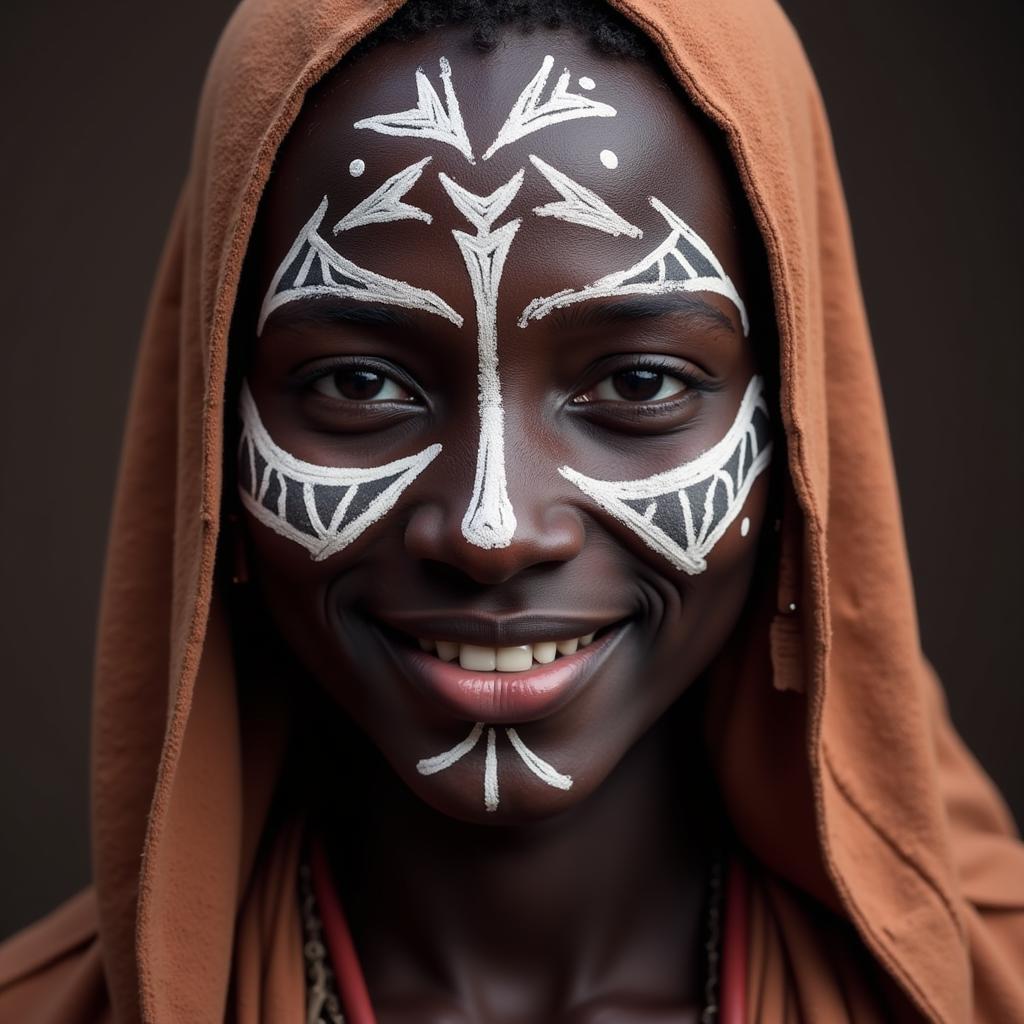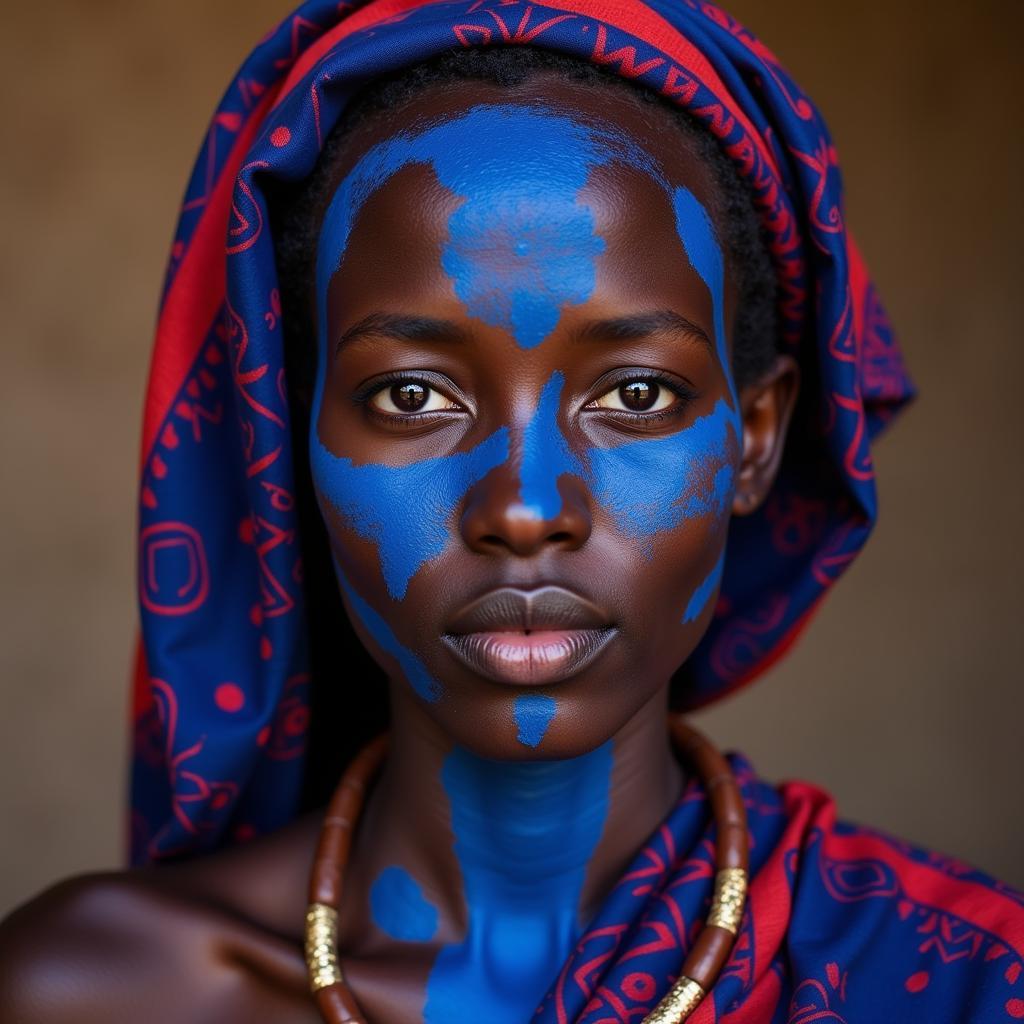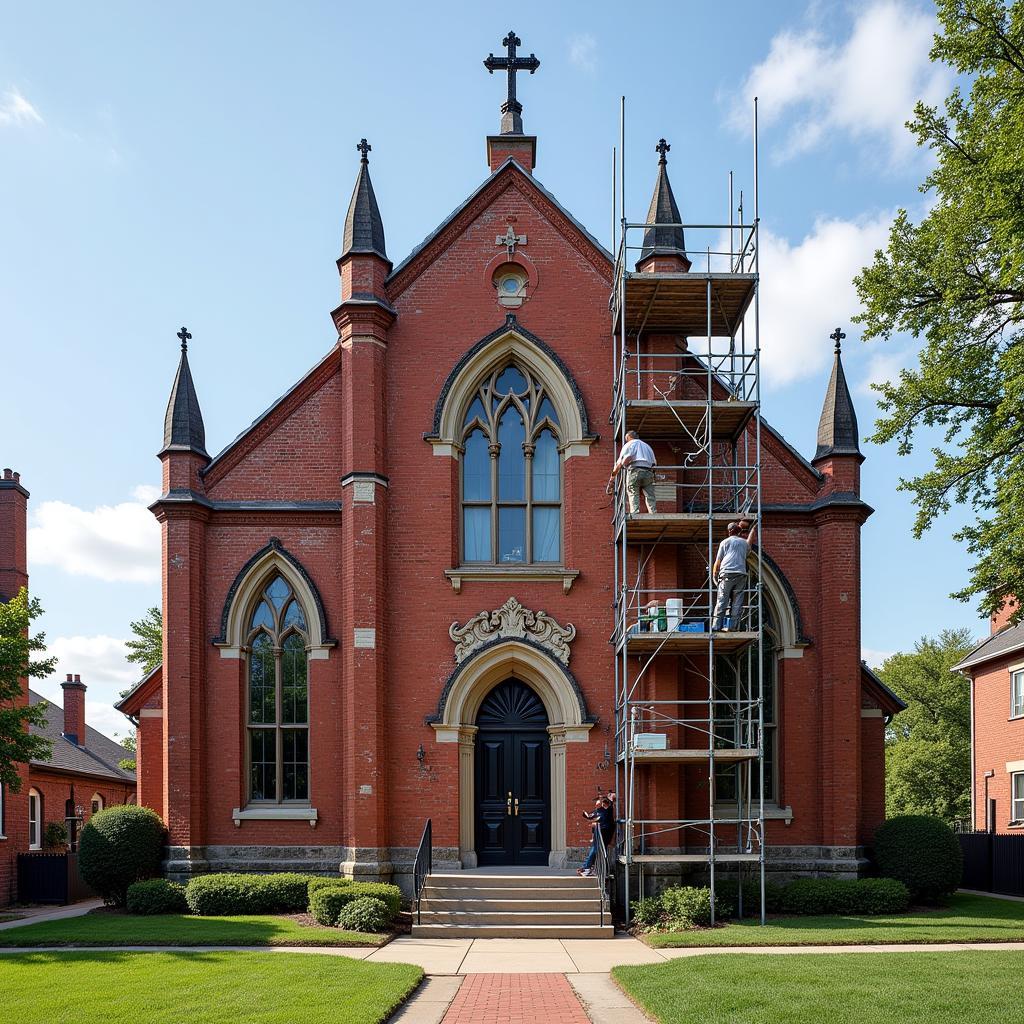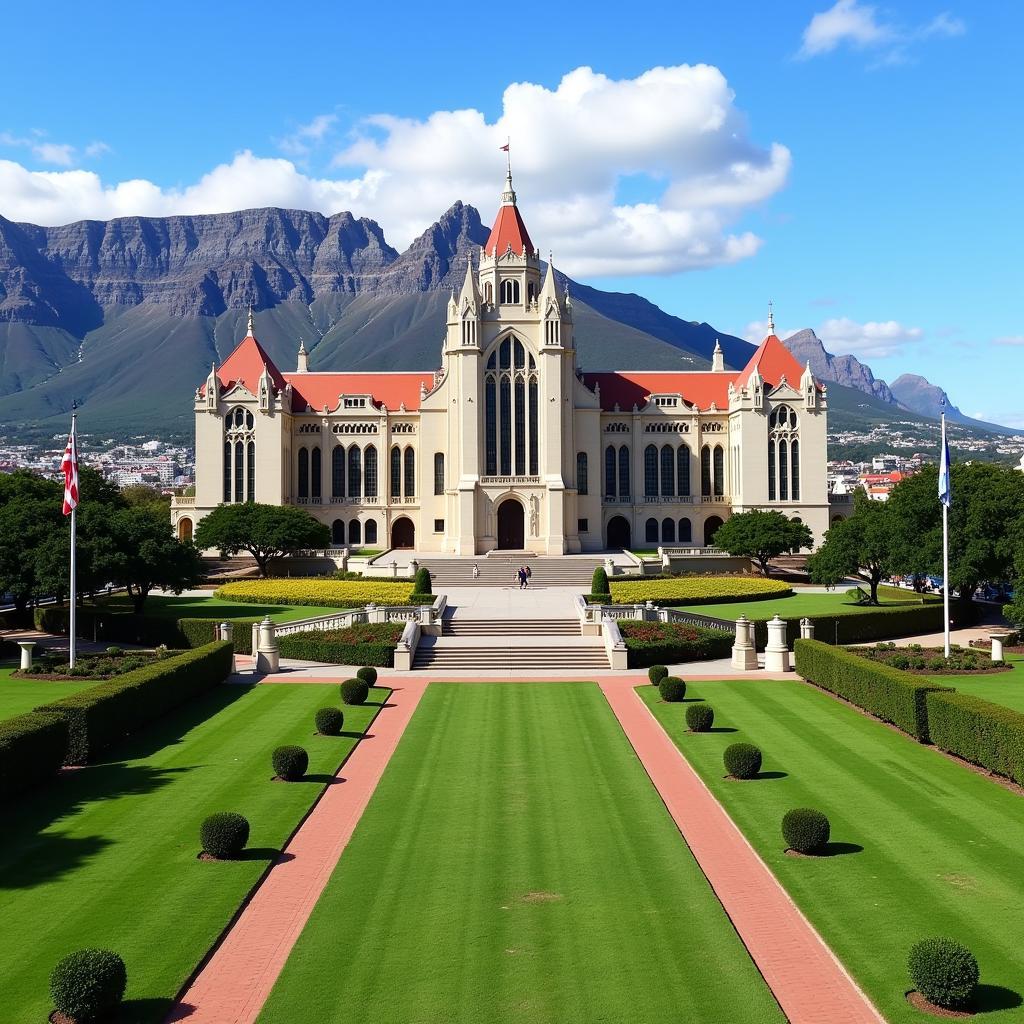The Meaningful Art of African Face Paint
The striking imagery of African Face Paint, a visual language as old as the continent itself, captivates the imagination and speaks volumes about culture, tradition, and individual identity. More than just decoration, these intricate patterns serve as powerful symbols, conveying a wide range of messages across diverse communities. From ceremonial rites and social hierarchies to expressions of beauty and spiritual beliefs, African face paint offers a fascinating glimpse into the rich tapestry of African life.
A Window into Tradition: The Significance of Face Paint
Across the vast African continent, face painting traditions vary greatly, reflecting the unique customs and beliefs of each ethnic group. In many cultures, specific colors, patterns, and designs hold deep cultural and spiritual significance.
 Maasai Warrior with Traditional Face Paint
Maasai Warrior with Traditional Face Paint
For example, the ochre-painted faces of the Himba people of Namibia represent their connection to their ancestors and the earth. In East Africa, Maasai warriors adorn their faces with vibrant red ochre and white clay, signifying bravery and strength. These intricate designs often denote age, social status, and clan affiliation.
Beyond Decoration: The Practical Uses of Face Paint
Beyond their symbolic meaning, African face paints also serve practical purposes. Many communities utilize natural pigments with insect-repellent or sun-blocking properties, providing crucial protection against the harsh African climate.
 Fulani Woman with Indigo Face Paint
Fulani Woman with Indigo Face Paint
For instance, the indigo dye used by the Fulani people of West Africa not only creates stunning visual patterns but also helps to protect their skin from the sun. This practical application demonstrates the ingenious ways in which African cultures seamlessly blend artistry with functionality.
A Celebration of Beauty: Face Paint in Everyday Life
While often associated with ceremonial occasions, face painting also finds its place in everyday African life. In some cultures, women use natural dyes and pigments to enhance their beauty, similar to cosmetics in other parts of the world.
 African Women Applying Face Paint
African Women Applying Face Paint
These temporary adornments, often applied during social gatherings or festive celebrations, highlight the importance placed on aesthetics and self-expression. From subtle markings to elaborate designs, face paint allows individuals to communicate their personal style and creativity.
A Living Tradition: Face Paint in the Modern World
Despite the influences of globalization, the art of African face paint continues to thrive, adapting to contemporary contexts while preserving its cultural essence. While some traditional practices persist, modern interpretations have emerged, incorporating new materials and artistic influences.
Today, African face paint transcends its geographical boundaries, inspiring artists, designers, and beauty enthusiasts worldwide. From fashion runways to music festivals, these striking visuals have become a powerful symbol of African identity and creativity, captivating audiences with their timeless beauty and cultural significance.
Conclusion
African face paint, a mesmerizing blend of artistry and tradition, offers a captivating window into the diverse cultures of the continent. From ceremonial rituals and social hierarchies to expressions of beauty and spirituality, these intricate designs convey a wealth of meaning, reflecting the rich tapestry of African Life. As a living tradition that continues to evolve and inspire, African face paint stands as a testament to the enduring power of cultural heritage in a rapidly changing world.


